Raja Ampat, or the Four Kings, is an archipelago comprising over 1,500 small islands, cays, and shoals in the northwest tip of Bird’s Head Peninsula on the island of New Guinea, off the northeastern coast of Indonesia’s West Papua province. The archipelago’s four main islands are Misool, Salawati, Batanta, and Waigeo, and the smaller island of Kofiau.
The Raja Ampat area contains the highest recorded diversity of marine life on Earth, according to Conservation International. Diversity is considerably greater than any other area sampled in the Coral Triangle composed of Indonesia, Malaysia, Philippines, Papua New Guinea, Solomon Islands, and East Timor. Located at the heart of the world’s coral reef biodiversity, Raja Ampat possesses the richest coral reef ecosystems in the world.
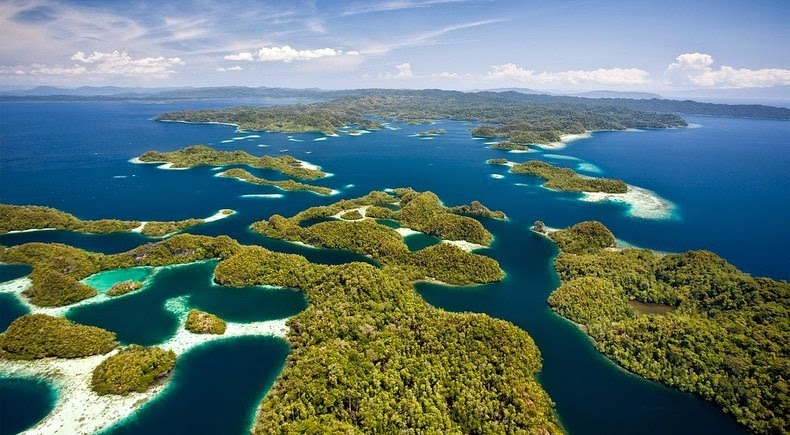
Comprising of mostly uninhabited islands, Raja Ampat has some of the best diving spots in the world. The sparsely populated islands are also great for birdwatching and just exploring amid sublime scenery of steep, jungle-covered islands, white-sand beaches, hidden lagoons, spooky caves, weird mushroom-shaped islets and pellucid waters. But it is under the water where one finds the most amazing creatures in abundance. There are more than 1,500 species of fish, 537 species of coral and 699 mollusk species. A remarkable 96% of all stony corals recorded from Indonesia are likely to occur in these islands and 75% of all species that exist in the world.
The name of Raja Ampat comes from local mythology that tells about a woman who finds seven eggs. Four of the seven eggs hatch and become kings that occupy four of Raja Ampat biggest islands whilst the other three become a ghost, a woman, and a stone.
History shows that Raja Ampat was once a part of Sultanate of Tidore, an influential kingdom from Maluku. Yet, after the Dutch invaded Maluku, it was shortly claimed by the Netherlands. The main occupation for people around this area is fishing since the area is dominated by the sea. They live in a small colony of tribes that spreads around the area. Although traditional culture still strongly exists, they are very welcoming to visitors.
Also see: The Rock Islands of Palau
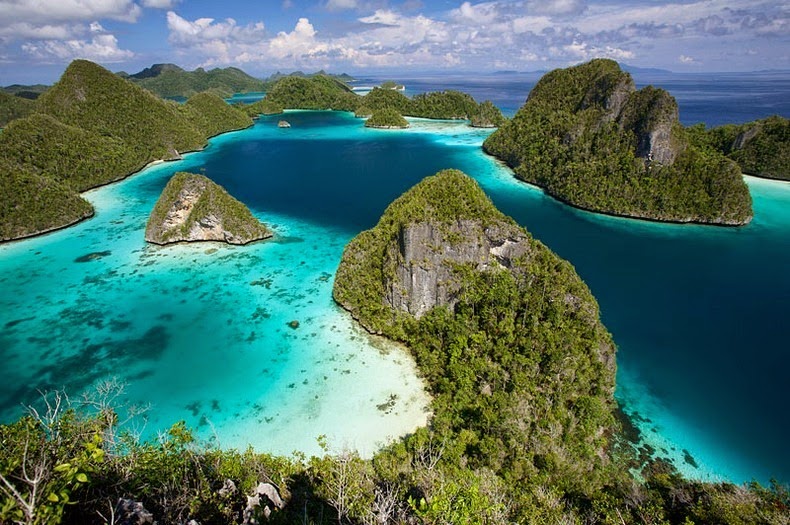
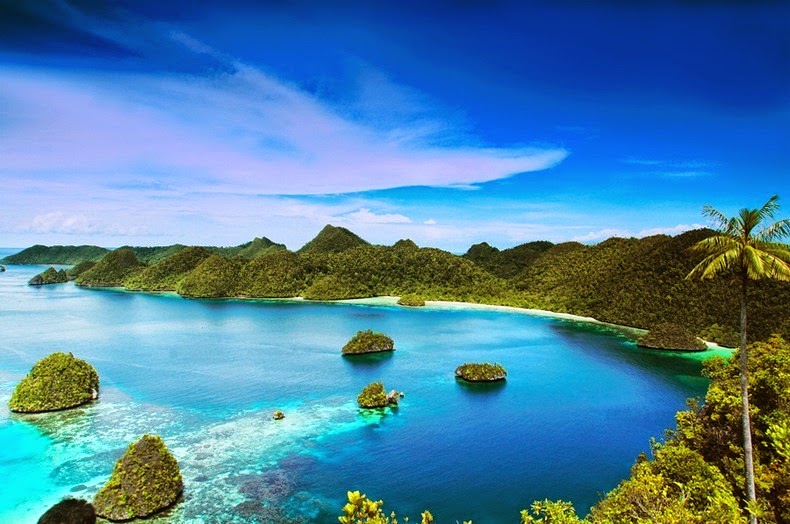
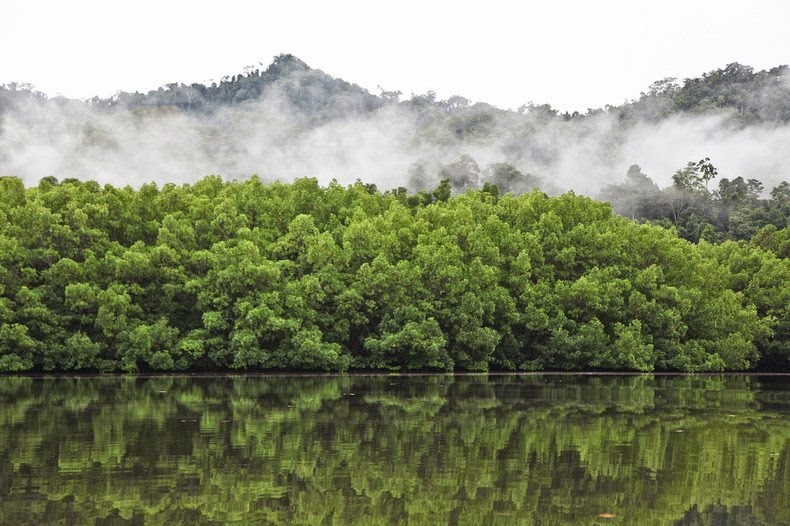
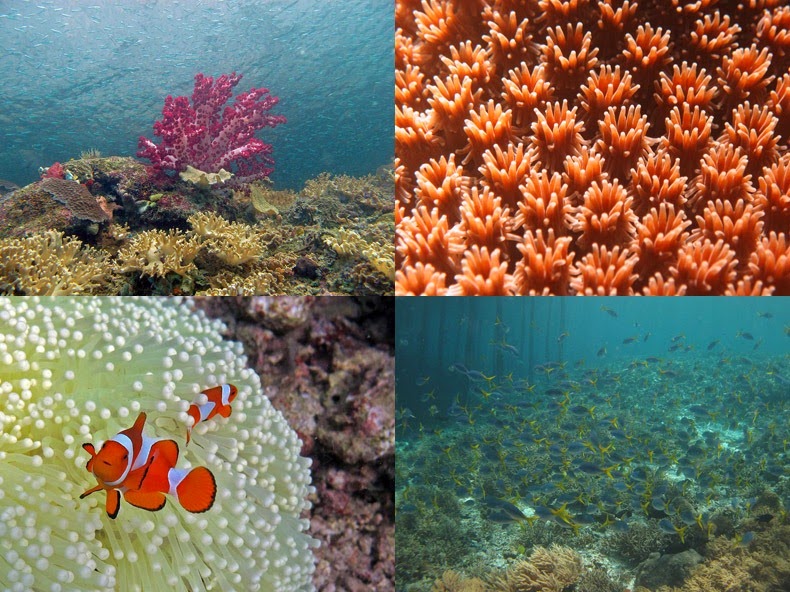
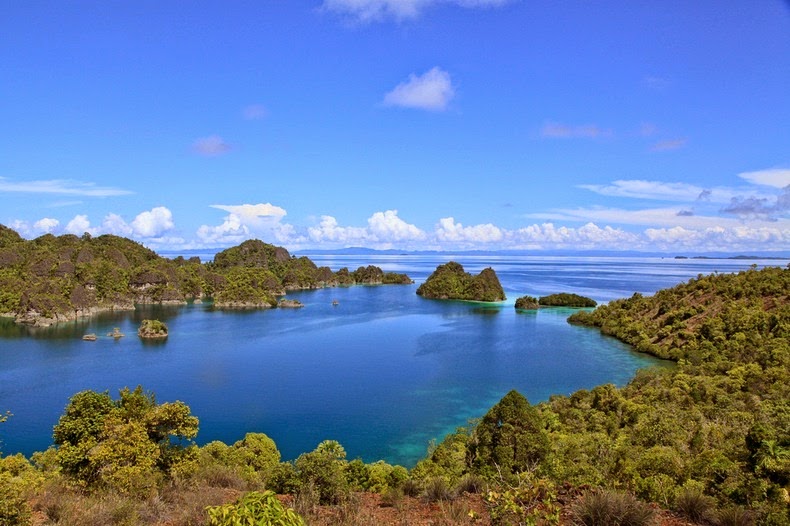
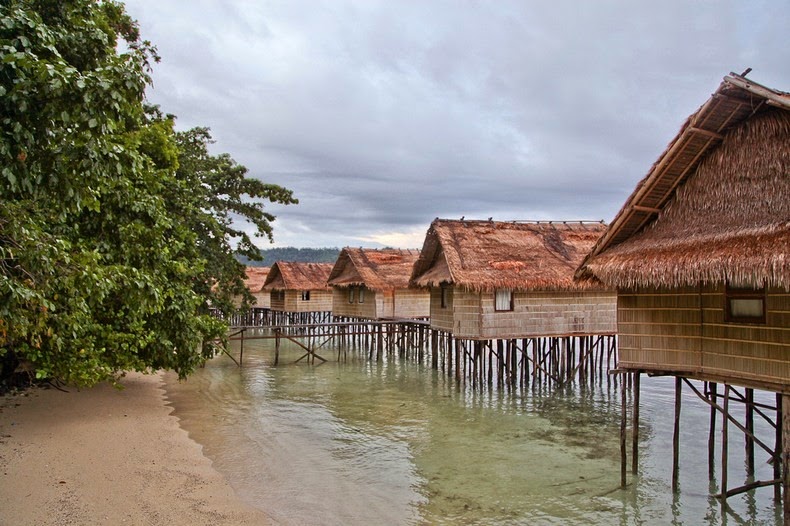
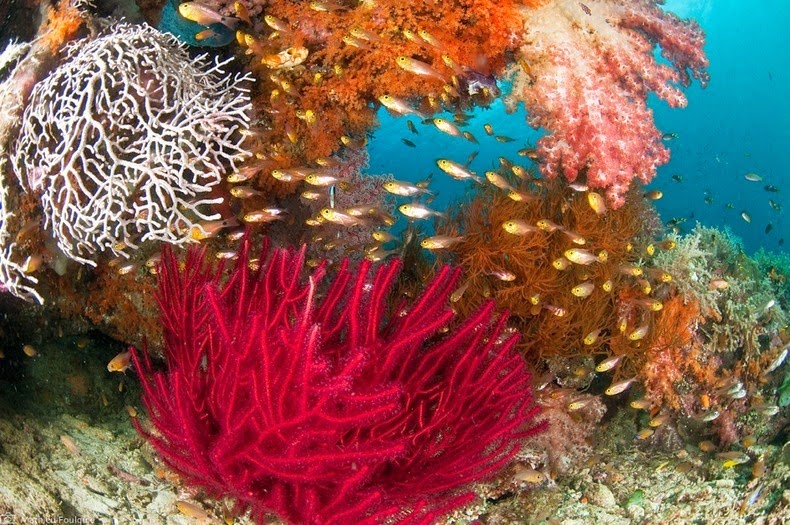
Sources: Wikipedia / Lonely Planet














